Red Clay - Tamale, Ghana. Part II.
Hey guys, as promised in my last post this is the rest of the Red Clay tour. This part covers the art and history that was inside the Red Clay “museum” as I call it.
So starting with the most obvious thing you’ll notice stepping into the brick room full of art, is this wall of art made from wood.
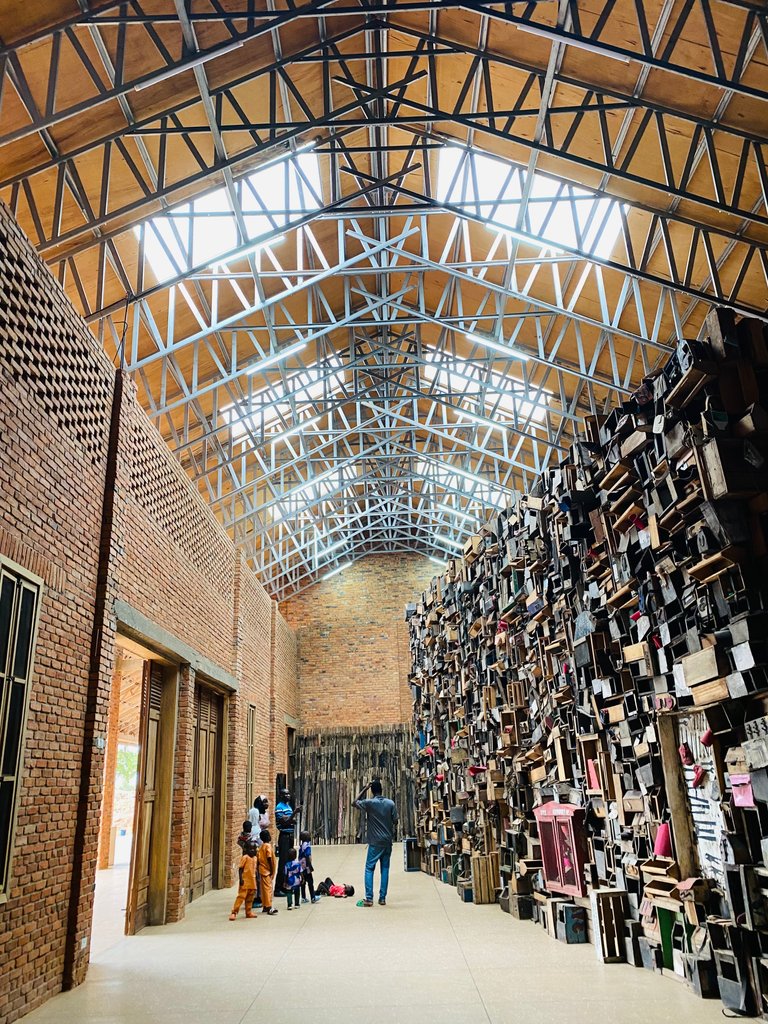
A lot of people that have gone to Red Clay have simply taken pictures standing next to this giant wall of art in awe of what it is, but never really bothered to find out what it was made out of or why.
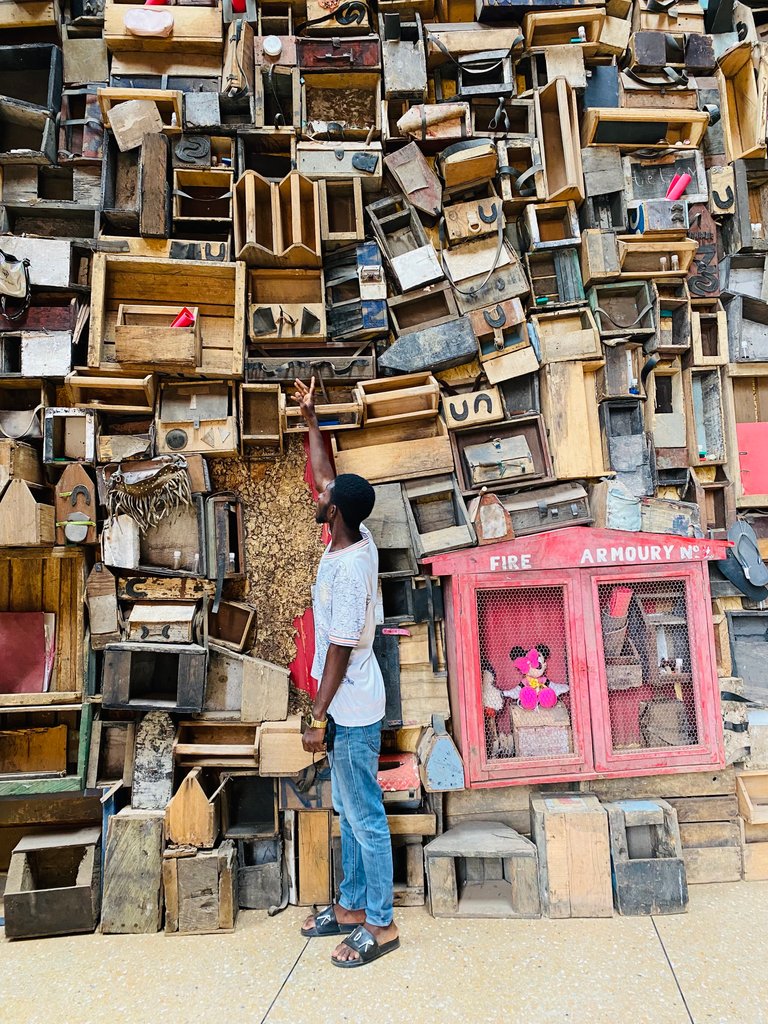
What you’re looking at behind me is called the non-orientable Nkansah. Fascinating, isn’t it? It’s a wood backbone wall with all of these extra things hanging on it. The extra things are made from a variety of wood-made items with shoeshine boxes being the most abundant. I’m not sure you’ll know what shoe shine boxes are if you’re not from around Africa, but I’ll try to describe it to the best of my knowledge.
Around here, we have people called shoeshine boys who go around with tools to clean people’s shows or mend spoilt shoes or slippers. They carry their tools in a triangular wooden box, and that box is what is called a shoeshine box.

Anyways, back to the wooden wall. Shoeshine boxes are not the only things hanging there. We have all sorts of wood-made materials, and other things like even purses and I’ll explain why they’re there.
Ibrahim with the help of a shoeshine boy called Nkansah, collected the shoeshine boxes and these other wood materials from factories that were about to be demolished or burnt, or even boxes used for fishing and crate storing, because Ibrahim believed these represented the history of these spaces and tells the story of the place for generations to come. Hence, they deserved to be preserved. He collected the boxes from shoeshine boys in Accra(the capital of Ghana) and named the wooden wall after Nkansah, the shoeshine boy who helped him put together the materials to make this wall.
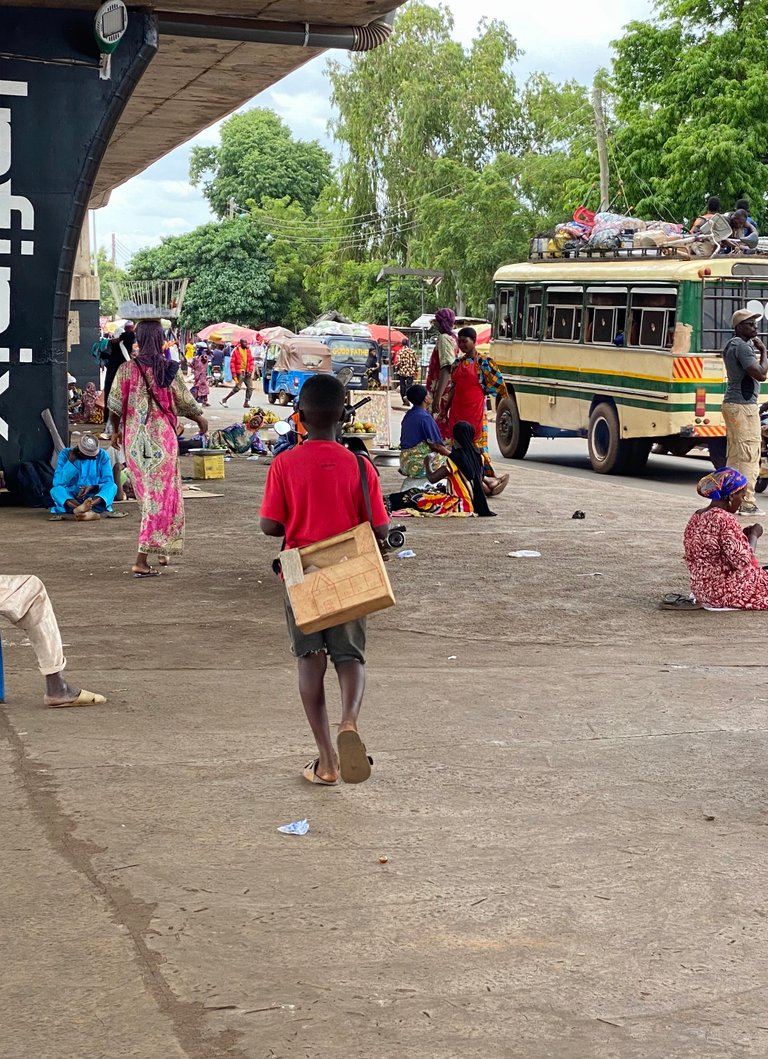
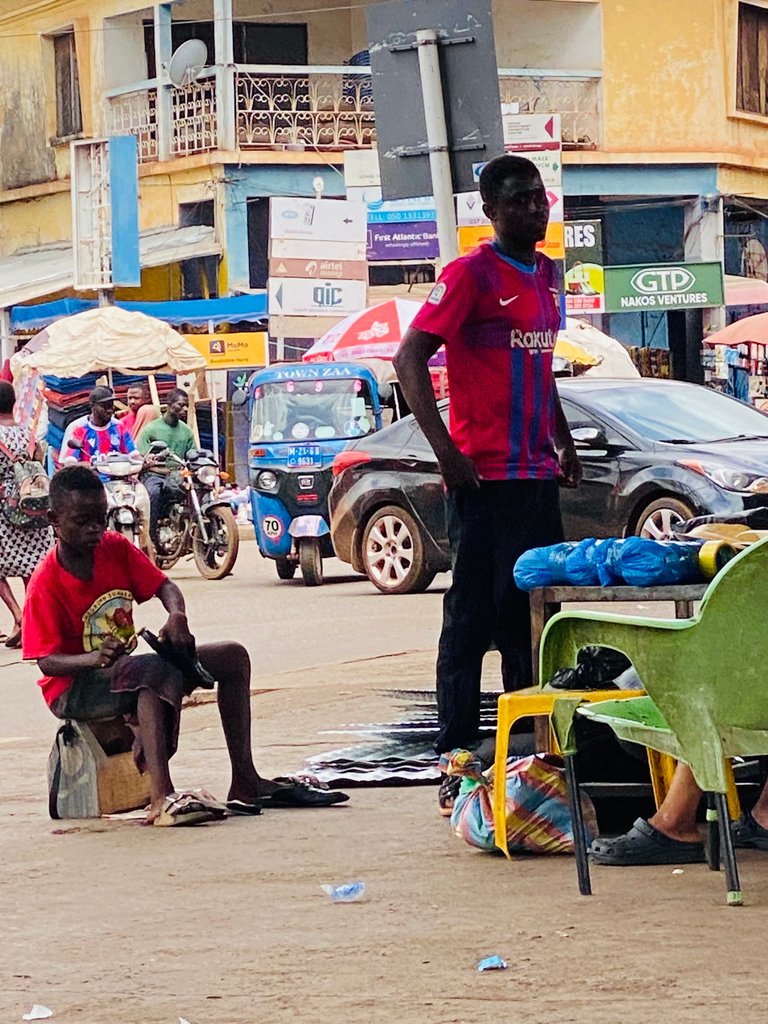
This is a picture I took today in the market of a shoeshine boy. The thing you see him carrying is the shoeshine box and that’s what you see dominating on the Non-orientable Nkansah.
Next thing of awe at Red Clay is these things we were standing in front of. Can you guess what they are? No? Okay I’ll tell you.
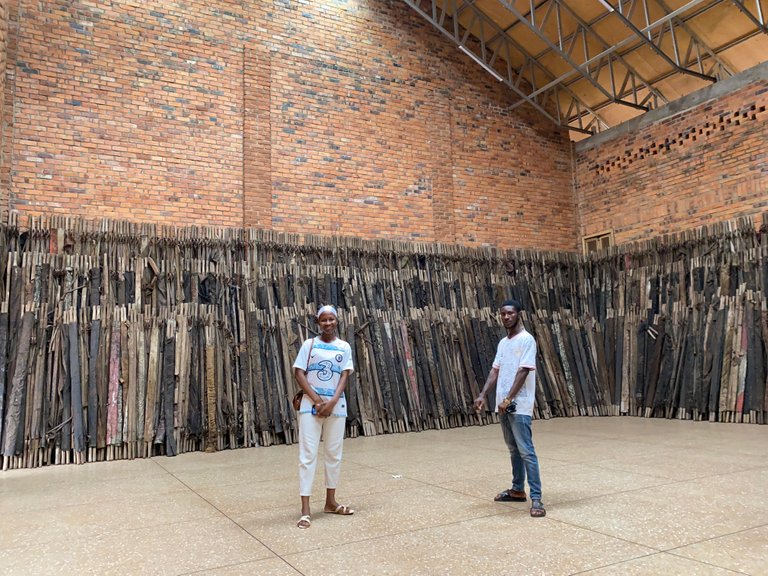
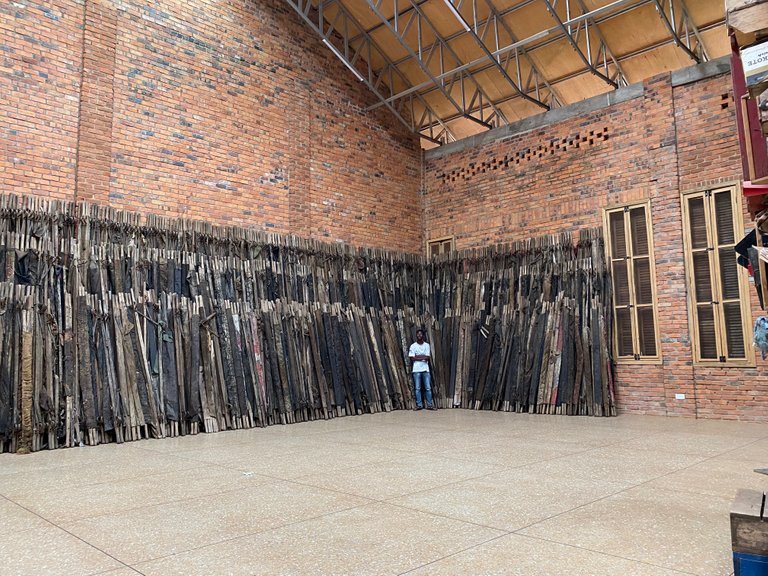
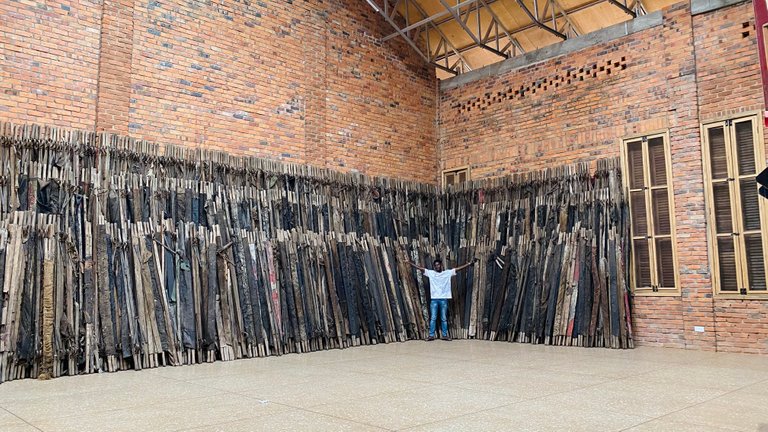
These are stretchers reconstructed from what stretchers from WW II looked like. Stretchers are what paramedics used ti carry soldiers who took hits on the battle field. No of course these are not the original stretchers that were used during the war. Those would have blood on them. However instead of blood, these stretchers have crude oil and smell of the stench of fish. Because like the blood of soldiers that fought the wars, the crude (grease) represents the toil of people like auto mechanics and the fish stench, the struggle of fishermen and fish mongers. You don’t smell the grease or the fish stench from far away, but only when you get reaaallly close. I took a closer shot so you can see better.
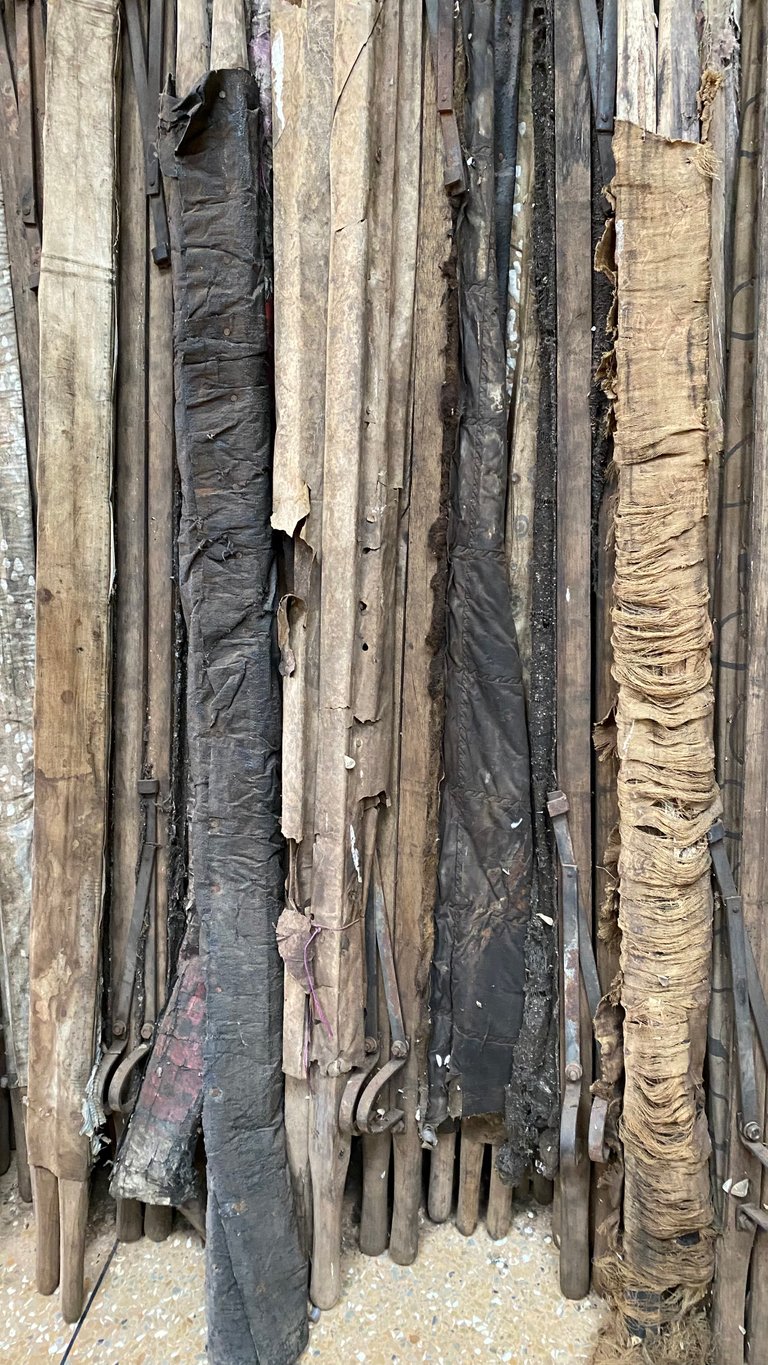
We didn’t get to see them opened, so I can’t show you what that looks like. But this is picture of them open taken on the internet. The one in this picture looks very clean though as you can see.
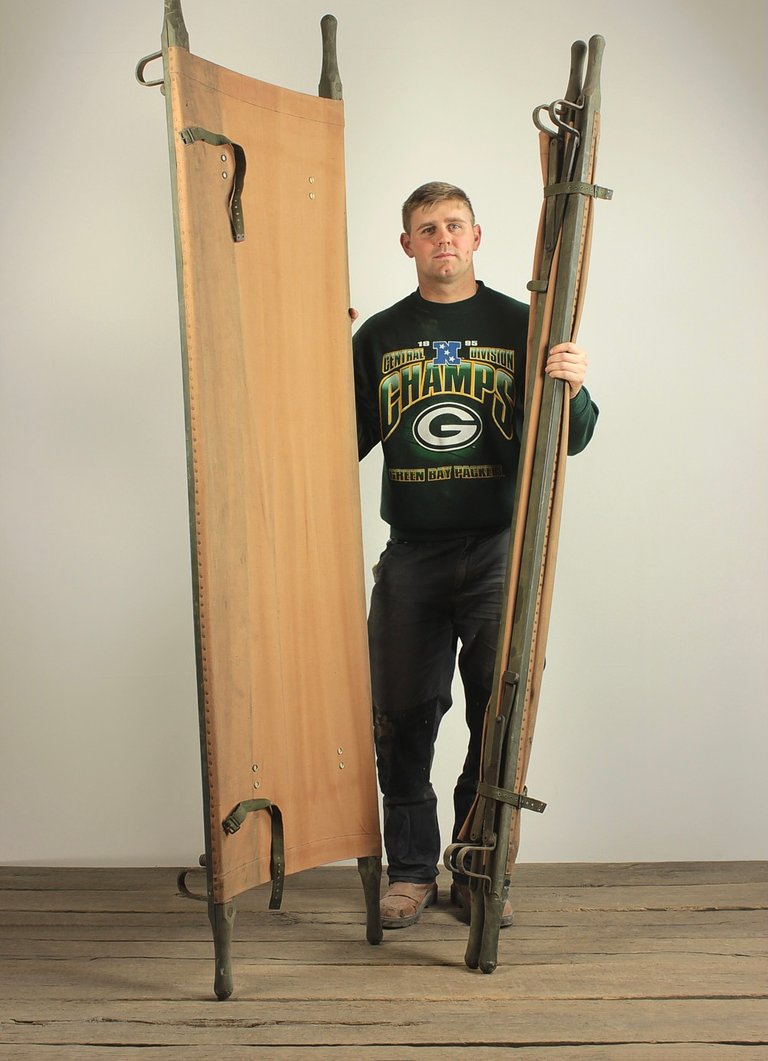
The stretchers don’t have a fancy name like the non-orientable Nkansah, but it still represents art.
As you walk away from the stretchers you find this on the wall. It’s a picture of a kayaaye with tattoos on the hand and her hand is stretched over a sac. The tattoos, as I’ve come to learn were used to mark and identify slaves as you can see the tattoo on the arm here is a name.


These 2 pictures were actually taken by @nhaji01
I took this picture with a @nhaji01’s hand stretched over the art work as well. But the frame was so well done that if I only showed you this picture, you probably wouldn’t be able to tell which arm was a painting and which was live.
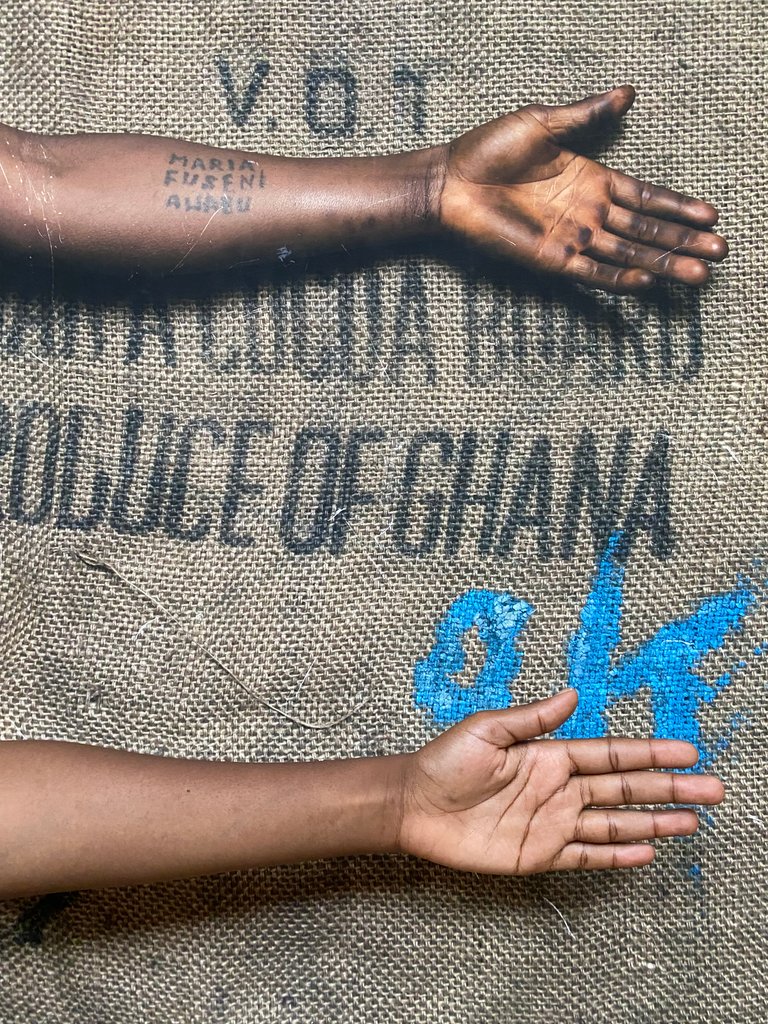
An interesting bit of background story we were given was about the sac on which the arm was stretched on. On the road back from Burkina one time, Ibrahim saw trucks loading things like onions in these sacs heading into Burkina. So he thought about how these sacs are going to places where the people that use them haven’t been to.
According to our tour guide, these sacs are imported from Bangladesh and used to bag cocoa for export. But immediately the cocoa is emptied from the sacs, the sacs are disposed and not re-used to prevent spread of pests os anything like that. After they’re disposed in the harbor, market women who deal in charcoal and onions and that kind of stuff are the next batch of owners of these sacs. Ibrahim looked at where the sacs were coming from, what they’d been used for in their live cycle, and how the people who have used or will use them have no idea the story of the sacs, and haven’t been to the lands the sac has been or will be.
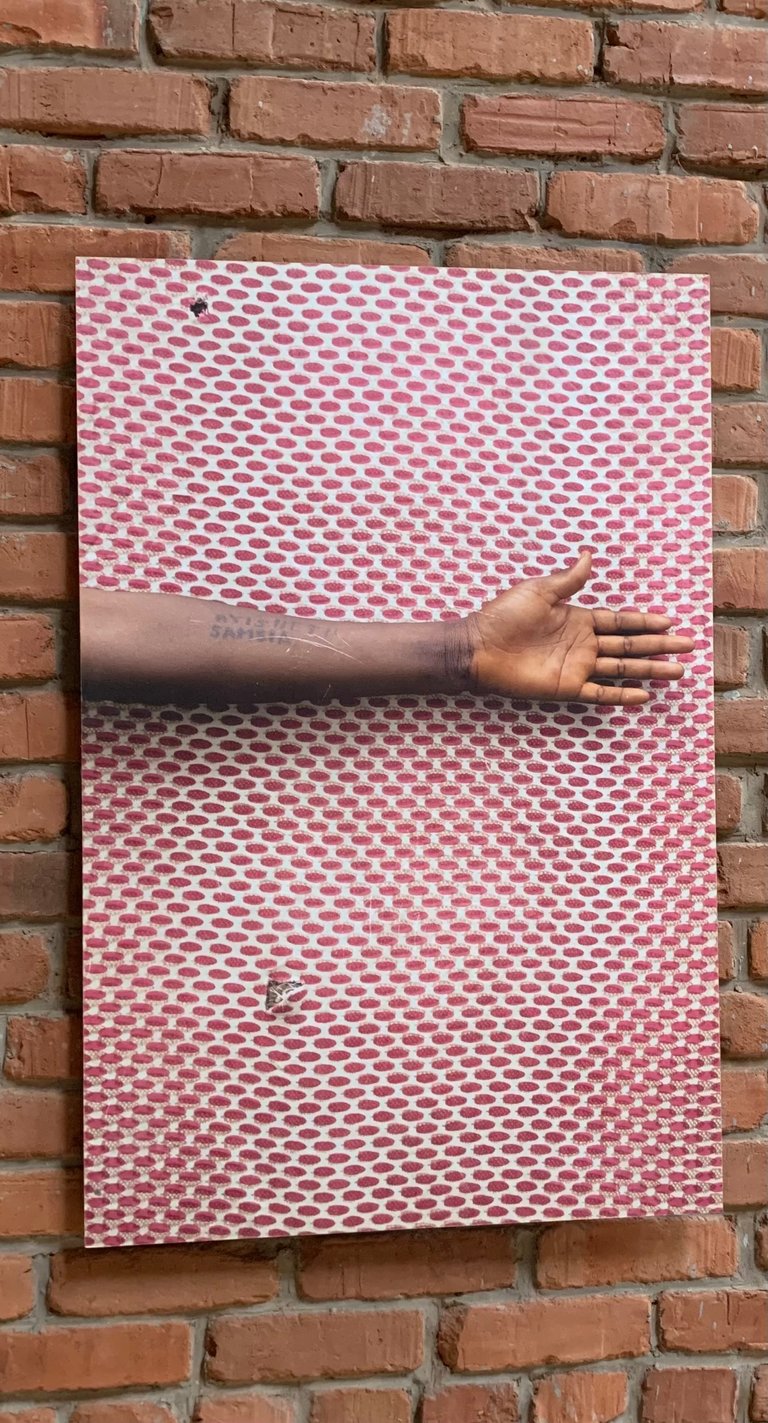
There was also this, another form of the frame I showed you previously. What was interesting about this one in particular was how lively that tear in the art looked. I assure you though, it’s a part of the frame. It’s not actually live and torn amd hanging. We thought it was though and tried to brush our finger over it to be sure but were advised against it. Many others who didn’t have a tour guide with them proceeded to scratch on it, so if you get a little closer, you see scratches on that part of the frame, just like you see on the arm. I’m not sure you can see the scracthes from the distance I took this shot, sorry.
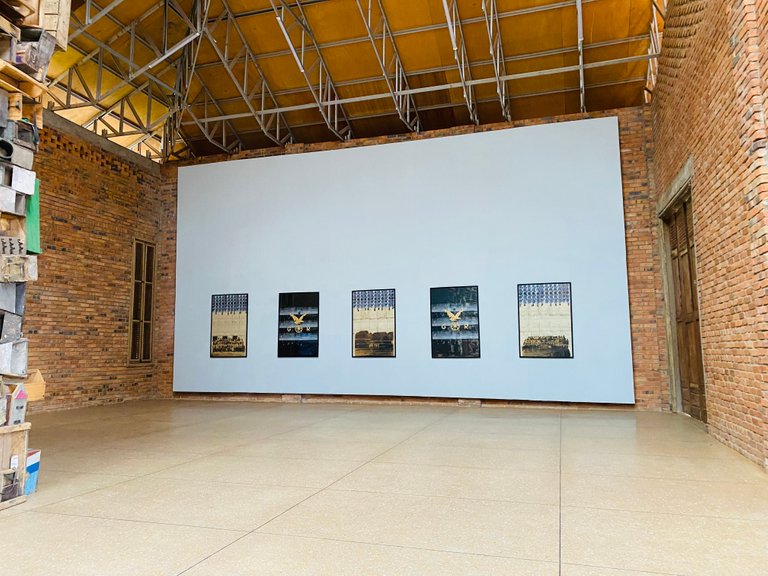
Then lastly, there’s this - an exhibition of framed arm. These are like the normal forms of art we’re used to: art in the form of images and pictures. There’s a lot of background story to these as well but I didn’t really get the details of this part because I was in and out of the place by the time the tour guide got this part. I’ll give you better details of the stories they tell in my next visit to the place.
It’s mind blowing that with everything we saw and experienced, I can say we haven’t seen up to 20% of Red Clay yet. There’s so much art there and hopefully the next time I go there, I’ll show you a bit of the remaining untold stories of Red Clay. I might make one last post about Red Clay which will ahow videos of the place. Not sure though. We’ll see. Thanks for passing by and have a great day!
Congratulations, your post has been added to Pinmapple! 🎉🥳🍍
Did you know you have your own profile map?
And every post has their own map too!
Want to have your post on the map too?
This is a very powerful place. Everything you described matches with what I watched on Ibrahim's video/read about his works. He really puts himself and the spirit of Ghana into his art.
It must have been an immersive experience visiting Red Clay, especially considering you have shared only 20%?! Truly amazing body of work by the living legend, Ibrahim Mahama. Thank you again for sharing!
Ibrahim is a very intriguing guy! You’d understand the magnitude of how much his life and work fascinates me better if you were from around here. The mind he has, you don’t find that very common among people where I come from - a mind that can see and appreciate art so well. He’s a real inspiration to myself and many people here. And yes, Red Clay houses so much art that everything my tour covered isn’t even up to 20% of the place. Amazing place, really!! Thanks for passing by, Ema:)
Yes, I was literally amazed to see he was born in 1986! The guy must be a powerhouse to have achieved this much already. Thanks to you, so many more people know about this place and perhaps even the man behind it. 🙏
Hiya, @LivingUKTaiwan here, just swinging by to let you know that this post made it into our Top 3 in Daily Travel Digest #1899.
Your post has been manually curated by the @pinmapple team. If you like what we're doing, please drop by to check out all the rest of today's great posts and consider supporting other authors like yourself and us so we can keep the project going!
Become part of our travel community:
Thank you for the support and the feature!
Those paintings with the hands are incredibly realistic. Whoever painted them, did a great job!
Right? It’s amazing how live it looked. So much that if you’re not told it’s a painting, you’d think it’s a picture.
Absolutely!
The art and history at Red Clay are amazing. I hope I can visit one day and experience it myself. Thanks for sharing
Thanks for pass through. If you ever make it around Ghana, get to Tamale and hit me up. It’ll be a fun experience:)
It’s the first time that I see a post like this about Ghana, it’s powerful and I love all the history you explained about the art. This art is original and also it can make you think and reflect!
That’s the whole vision the owner and creator of the space had. To tell and preserve the story of Ghana through this space. Haha I did my best explaining the art. The artist himself would’ve done a better job.
This really a great adventure @depressedfuckup. All the ancient pics here are very beautiful capture with your camera. I wish to be there one day.
Hit me up when you’re in the North. I’ll show you around:)
@depressedfuckup Hello friend very interesting museum, here in our country Venezuela, a few years ago there was the shoe shine, people mostly men or boys, who carried his box and cleaned with cream shoes of people who asked for their service, toured the most famous streets of our city, always polished shoes, but did not fix them, these other people, they are called shoemaker that is his job.
Oh yes we have shoeshine and shoe maker (shoe doctor). The people who only clean are the shoe shines, but those who fix are shoe doctors:) Interesting to see that this is in other parts of the world too. Thanks for sharing.
@depressedfuckup Very interesting your story, we always learn something new.
Indeed. Thanks for passing by. Have a great day.
A small reward adjustment. Nothing wrong with content, but over rewarded
Okay, sure. Thanks for the explanation at least.